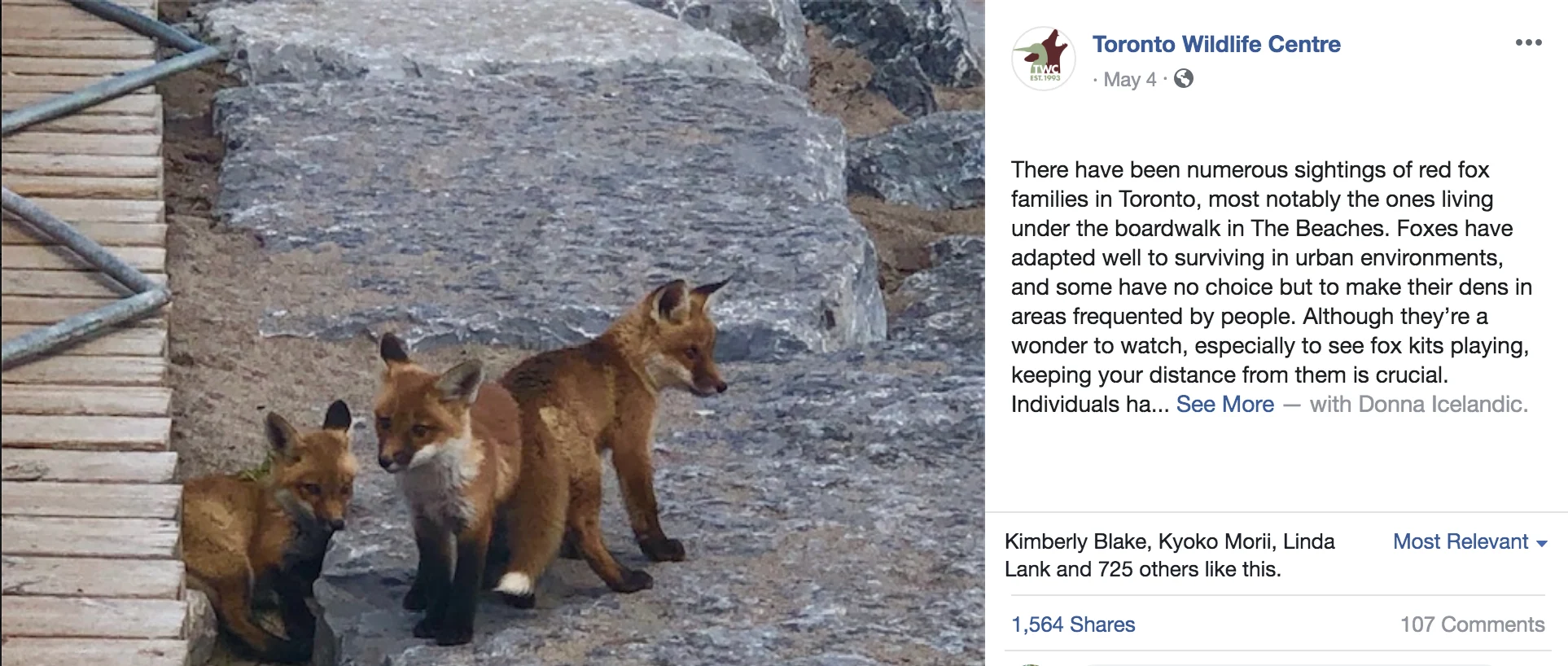
Why wildlife sightings have seemingly spiked in Toronto
Despite popular belief that animals are flocking to empty urban areas, the Toronto Wildlife Centre says there are several reasons as to why there have been more wildlife sightings.
Recently, The Weather Network has been bombarded with videos of cute animals in urban settings - from geese crossing a busy intersection in Toronto, to a moose playing a ball in a backyard in Calgary. But the idea that animals are creeping into cities because of COVID-19 is simply not the case, according to the Toronto Wildlife Centre (TWC).
“I have been asked this question a dozen times in recent weeks and, from our perspective, there aren’t more wild animals coming into the city,” said Nathalie Karvonen the executive director of the Toronto Wildlife Centre.
According to Karvonen, Toronto already has a huge diversity of wild animals. They admit up to 300 different species from around the Greater Toronto Area.
“Many wild animals are quite territorial, rigorously defending their territories from other wild animals – and this wouldn’t change during COVID,” she added. “Also, in order for wildlife populations to increase it would take a lot more time and population numbers are primarily dictated by available food, water and shelter.”
WATCH BELOW: GEESE STAND OFF WITH FOX WHO GETS A LITTLE CLOSE FOR COMFORT
Prior to the pandemic, people were busy with their day-to-day lives. Majority of people went into work and had many other distractions. Now, people have more time on their hands, just one of the reasons the TWC says they think there have been reports of more wildlife sightings right now.
“Let's say you're a fox or even a raccoon or a red-tailed hawk, you know within your territory, you might think a schoolyard is a great place to hang out right now because there aren't loud noisy kids running around playing all over the place,” said Karvonen. “Versus something like a backyard right now it's probably very unpalatable for wild animals because normally Monday to Friday people are at work, backyards are quiet. But right now people are out doing things in their yards on a much more regular basis.”
She says people are just seeing them in different spots.
“It's basically impossible for wild animal populations numbers to increase in such a short period of time. I know it feels like a really long time to us but many wild animals only have one group of babies per year and it can take six months or longer to raise them,” she added.
Regardless of the pandemic, Karvonen says animals nesting in unusual places isn’t uncommon.
Go here for our complete coverage of the COVID-19 pandemic
WATCH BELOW: TORONTO ERECTS BARRICADES TO PROTECT FOX FAMILY FROM PEOPLE
Most recently a family of foxes has made a space beneath the boardwalk at Woodbine Beach in Toronto home, drawing dozens of lookie loos.
“They're in the super cute stage right now. So people have been approaching them and trying to feed them. People have even been picking them up. There's even reports, believe it or not, of people dragging them out of the den to take pictures of them. Which is awful,” said Karvonen.

Courtesy: Toronto Wildlife Centre/Facebook
“These baby foxes are starting to get tame. Which is life-threatening for them. We've now, as of last week, we’ve started intervening, putting up fences and signs. We actually have volunteers posted there now during all daylight hours seven days a week. We have a camera down there too,” she added.
The concern is that these kits are essentially being trained that people are good.
“Instead of a normal fear of people, which wild animals need to develop you know when they're growing up in order to be normal psychologically as adults,” said Karvonen. “So people will say ‘come here little fox’. You know, here's a bit of muffin or hotdogs or whatever they happen to have with them and the foxes are learning that they can approach people safely and they get a reward for that and nothing bad happens.”
As cute as they may be, it is important to stay away and let them be. There have been other instances where animals have chosen bizarre locations to nest, including by extremely busy highways.
“There was another fox for example that nested, or had her den, right beside the 401 at a very busy point of the 401 where 16 lanes, and it was on the slope of grass there. We got a bazillion calls about her and she had been there year after year and she only has three legs,” said Karvonen.
The theory behind why she chose that spot? The absence of natural predators.
“Every year we get calls about Canada geese who have nested in the parking lot of Yorkdale mall or busy malls in the city. Again the theory is the same that they don't have to contend with coyotes and other natural predators there.”
Perhaps COVID has revealed to people just how many animals live among them.











